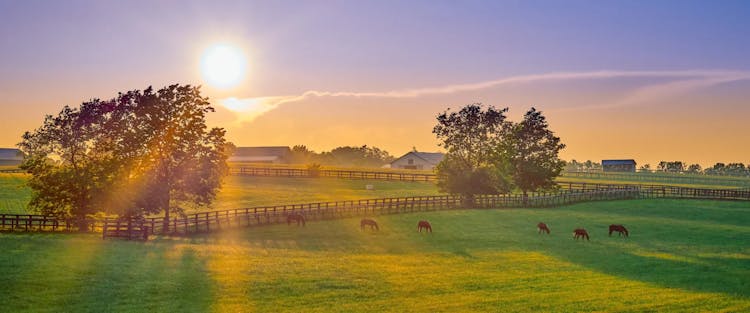
Canoeing with Hippos in Mana Pools National Park, Zimbabwe
Dawn rises. Its coolness reluctantly gives way to the gentle caress of warmth as the African sun ascends over Mana Pools National Park. Kissed by the first rays, the surface of the Zambezi River turns into a sea of sparkling diamonds. Sitting on the river bank's edge, the smell of black coffee steams from the tin cup my hands wrap around while I soak in the calmness of a new morning.
Leading me back to camp are footprints that look like a flower girl has scattered blossoms at a wedding—except the imprints in the dry, dusty ground are missing the rear petals.
“A hippo must have wandered through the camp at night,” says Craig, our guide from Natureways Safaris, when he sees my astonished face as I examine the prints of one of the earth’s largest and one of Africa's most dangerous mammals. Bigger than the palm of my hand, the flattened circles, each with four toes pointing forward, are a silent but powerful sign of what is to come.
My friend Cynthia and I are preparing to see some of Zimbabwe's 5,000 hippos on our safari paddling down the Lower Zambezi River along Mana Pools shoreline. Craig, with a loaded rifle over his shoulder, dishes out safety instructions. “Never put your hands into the water,” he says, and then points out the space where the emergency kits are stored. Prepared with the dos and don'ts, we get into the ready-packed, two-man, Canadian-style canoes to start our five-day adventure.
If time is limited, operators on the Upper Zambezi close to Victoria Falls also offer shorter trips, including half-day canoeing tours. However, Mana Pools National Park is renowned for its large hippopotamus population, as Global Conservation, an organization that funds protection systems for national parks, states in one of its reports. The 543,000-acre (219,600-hectare) wildlife conservation area in northern Zimbabwe became the country's first national park designated a UNESCO World Heritage site in 1984.

Since Cynthia and I are the only guests, Craig puts us in different canoes. Cynthia joins our second guide, Elijah, steering the canoe from the back. Being a more experienced paddler, I team up with Craig. Sitting in front, I let my paddle slowly glide through the water. At the same time, I soak up the unrestricted views of the deep-blue river, the island's lush green, crocodiles sunbathing on the riverbank, elephants quenching their thirst, and herons lifting off, extending their long necks and unfurling their expansive wings. Only the sound of birds and waves gently crashing against the canoe interrupts the silence.
On the way to our camp for the night, we see the first hippos—submerged in deep water with only their small, protruding eyes and nostrils above the surface and their little ears twitching and turning like puppet wind-up figures. The next day, we pass through narrow river channels full of hippo pods. “Welcome to Hippo City,” Craig says with a smile. Some herds are smaller, some more prominent, with over 30 animals in the group. But all have males showcasing impressive jaw-to-jaw sparring and whimsical yawning contests.

Craig constantly tries to steer our canoes on the safe side of the hippos, avoiding being in between them and deep water, the only place where the “river horses” feel safe. He bangs his paddle on the canoe wall to let them know we're coming. Yet wilderness is unpredictable.
“Paddle!” Craig suddenly commands in a quiet but somewhat alarming tone. He has spotted a mother and her calf separated from the herd. “Faster!” he demands, being well aware that, when agitated, hippos in water can charge at over 5 mph (8 km/h) by galloping along the river bottom. On land, hippos can reach a speed of 19 mph (30 km/h). “Paddle faster!” I again hear from the back of the canoe just as the female jumps out of the reeds at the bank in front of us.
Luckily, we manage to back away, swiftly crossing to the opposite side of the channel while the startled hippo and her young flee into deep water. With adrenaline levels on a high, we pull the paddles into the boats and let ourselves drift through the water before continuing our journey.
Finally, sitting around the campfire at dusk and having sundowners, we relive the moment and discuss conservation issues. After all, the global hippo population, estimated to be between 115,000 and 130,000, is waning at 6–8% per year. Like many other species, hippos are threatened by habitat loss and degradation, while the international demand for hippo parts, in particular their teeth, fuels poaching. The decline sparked a call for efforts to reclassify the species as threatened from vulnerable on the IUCN Red List.
While we talk, we can hear the sounds of water splashing and hippos' deep, guttural grunts and snorts, an evening symphony with a surprisingly calming effect.
For me, it's the best sound to fall asleep to in Africa.

Getting there
At 250 miles (400 km) away, the nearest airport to Mana Pools National Park is Robert Gabriel Mugabe International Airport in Harare (HRE); the drive takes five to seven hours. You can also charter a light aircraft from Victoria Falls Airport (reached via Tambo International Airport, JNB, in Johannesburg, South Africa) to Mana Pools airstrip. The 2-hour flight takes you over Lake Kariba, the world's largest artificial lake and reservoir by volume.
Average Going flight price to JNB: $683 RT
How to do it
Best time to go: The dry season from June to October is the best time for wildlife viewing, with the game concentrating around the Zambezi River and the pools on its floodplains. The rainy season occurs between mid-November and April.
Climate: While the early mornings and evenings during the winter can be chilly at around 54°F (12°C), temperatures soar during the summer months from September through to May, presenting hot to scorching days and warm evenings.
Clothing: Bring clothing in neutral colors such as brown, green, or khaki. Bare essentials are sunglasses, a long-sleeved shirt for sun protection, long trousers and a jacket for the evening, canvas shoes or rafting sandals, walking boots, a hat with a wide brim, and warm clothes for winter nights.
Safety: Natureways Safari guides have passed the examination set by the Department of National Parks and Wildlife Management and hold a valid Canoe or Professional Guides' License. They take a MARS (Medical Air Rescue Services) first aid course annually and carry a licensed weapon on the river.
Money: Rates for a four-day Mana Shoreline Canoeing Safari start from approximately $1,450 USD. The half-day trip starts from $110 USD. Guests will have to pay National Parks Fees before starting their safari; cash is the only form of payment. The daily conservation fee is $20 USD, and support vehicle rates vary from $3–$30 USD, depending on the size. Zimbabwe is experiencing a cash shortage, so bring enough cash for your holiday, as you cannot withdraw from ATMs or banks. Bring small denominations in USD. The most widely accepted credit cards are Visa and Mastercard.
Tips: Bring binoculars, cameras, and a head torch or hand torch. Remember to pack insect repellent containing DEET to enjoy the sundowners at the river bank.
More amazing experiences around the world:
Published February 23, 2024
Last updated February 27, 2024
Articles you might like
View AllTreat your travel to cheap flights
Most deals are 40-90% off normal prices with great itineraries from the best airlines. If it's not an amazing deal, we won't send it. Sign up for free to start getting flight alerts.




